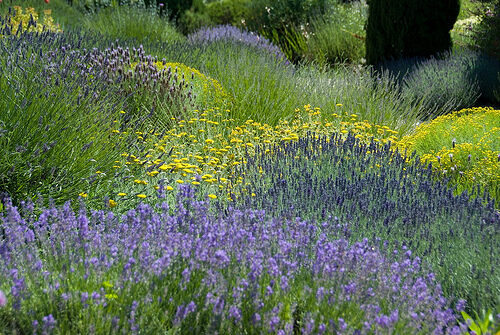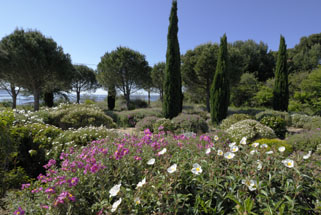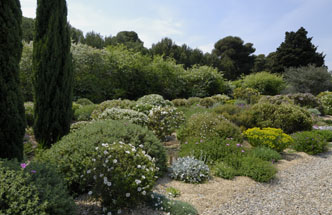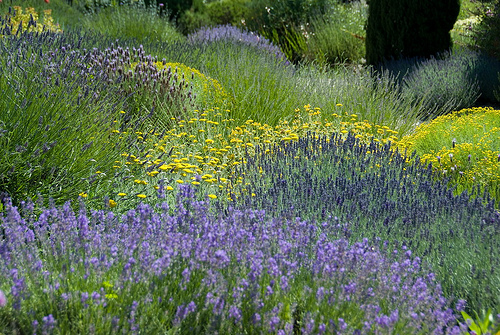
Here are our tips and tricks for landscaping your Mediterranean garden.
First of all, a Mediterranean garden is a garden made up of plants (often aromatic) from the Mediterranean basin and other regions of the world close to it.
These plants can withstand heat and even summer drought, but appreciate well-watered autumns and winters. Their colors and shapes are adapted to these harsh climates: gray to reflect the sun, rounded shapes to protect roots from the scorching sun.
It’s this characteristic that gives the Mediterranean garden the clean lines so appreciated today.
Mediterranean plants prefer draining soils (especially in humid regions, where the soil will need to be enriched with gravel), but fortunately not exclusively, which means that these magnificent plants can be planted in a large part of France.
The structure of a Mediterranean garden is based on a few geometrically-shaped trees (slender: cypress, graphic: oak, square: olive…), under which clumps of grey and glaucous green plants will bloom abundantly in autumn before falling back into summer lethargy by the time the hot weather passes.
Foto publicada al libre “Jardins d’exception en Languedoc-Roussillon” de la Caroline Lemaître
A Mediterranean garden can also be linked to the Dry Garden: beds that don’t require watering, between which the grass of the lawn is replaced by winding paths made of gravel/sand/beaten earth, or even recompositions of dried-up river beds.
Scarce water is almost non-existent here, or in small, refreshing fountains built next to the house.
Local materials are preferred: dry-stone walls, white gravel from limestone hills, stone benches, travertine, terracotta, stabilized rusted wrought iron, rough wood or wood painted the same color as the shutters.
The main decorative object is a Provençal jar, or large terracotta porteries at the entrance to the house.
Low plants include lavender, rosemary, santolina, rockrose, thyme and curry herb.
Bushes: mastic, myrtle, arbutus, teucrium, pittosporum, oleander, calistemon
Shrubs and trees: olive, oak (green, cork, white), florence cypress, umbrella pine, mimosa, fig tree, plane wall, hackberry.
Climbers: jasmine, Grasse rose, wisteria,
Grass is replaced by plants that look similar but require much less water, such as zoysia.
Planting: although most of these plants live in soil that is often chalky, they greatly appreciate drained soil. So don’t hesitate to fill the bottom of the hole with gravel or pozzolan to obtain this beneficial effect.
Maintenance: low-maintenance garden if well thought out in advance. A simple post-bloom ball pruning will suffice for most plants.
Our advice: although these plants don’t need watering once installed, they still need to be watered once a week for the first two years, until the deep root system takes over.
See examples of Mediterranean-style gardens created by our users.


examples of mediterranean gardens at filippi nursery

